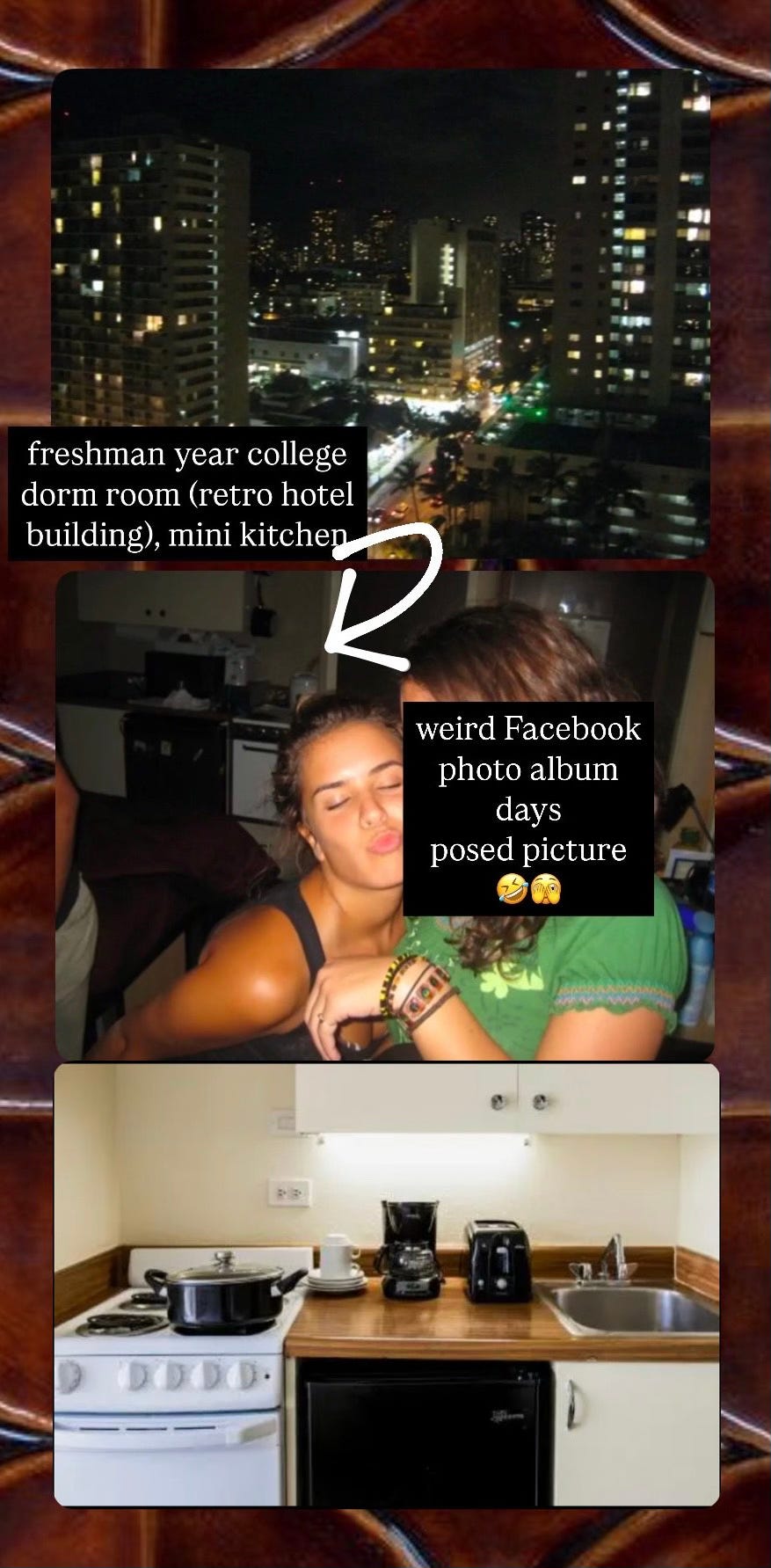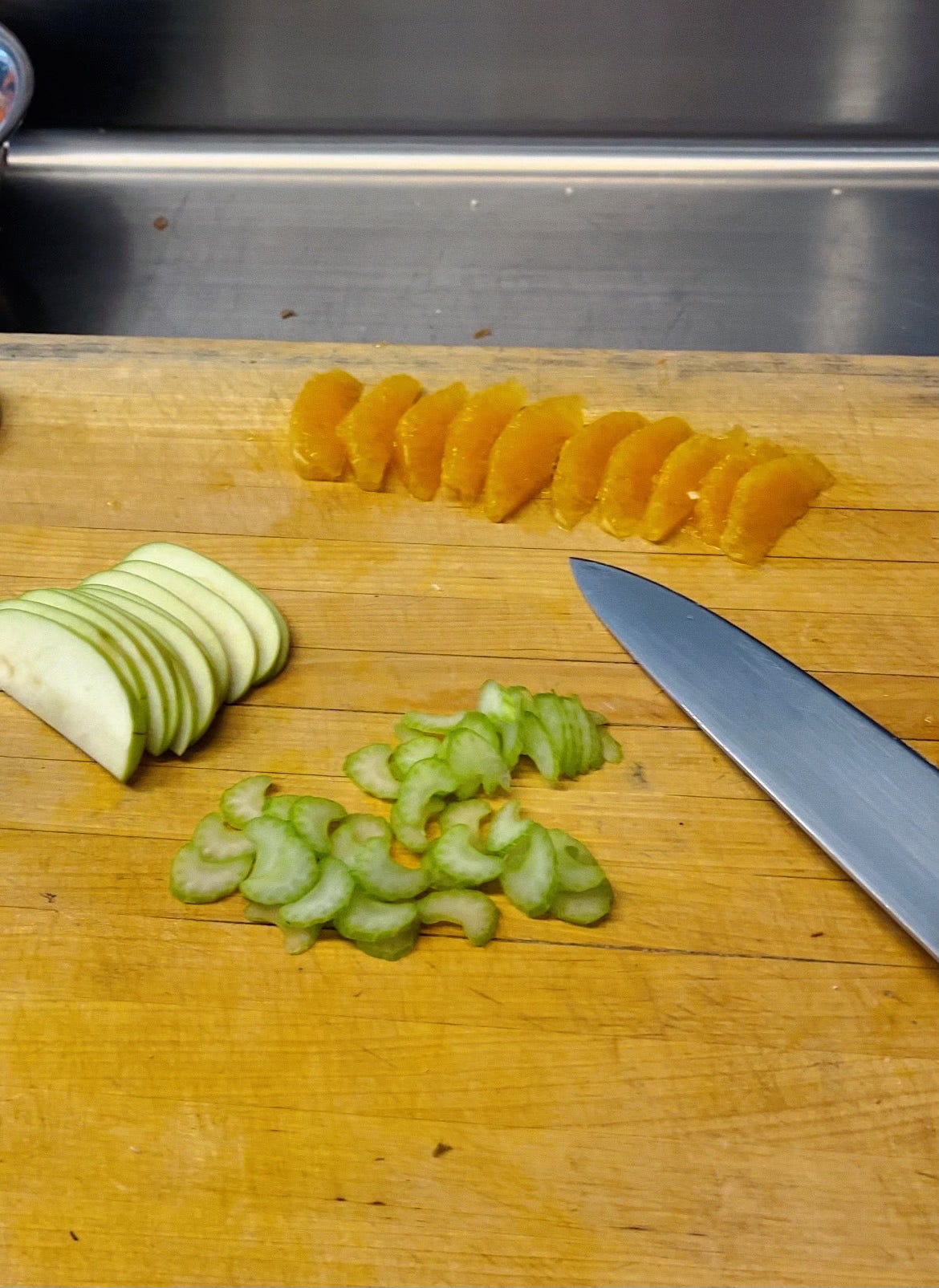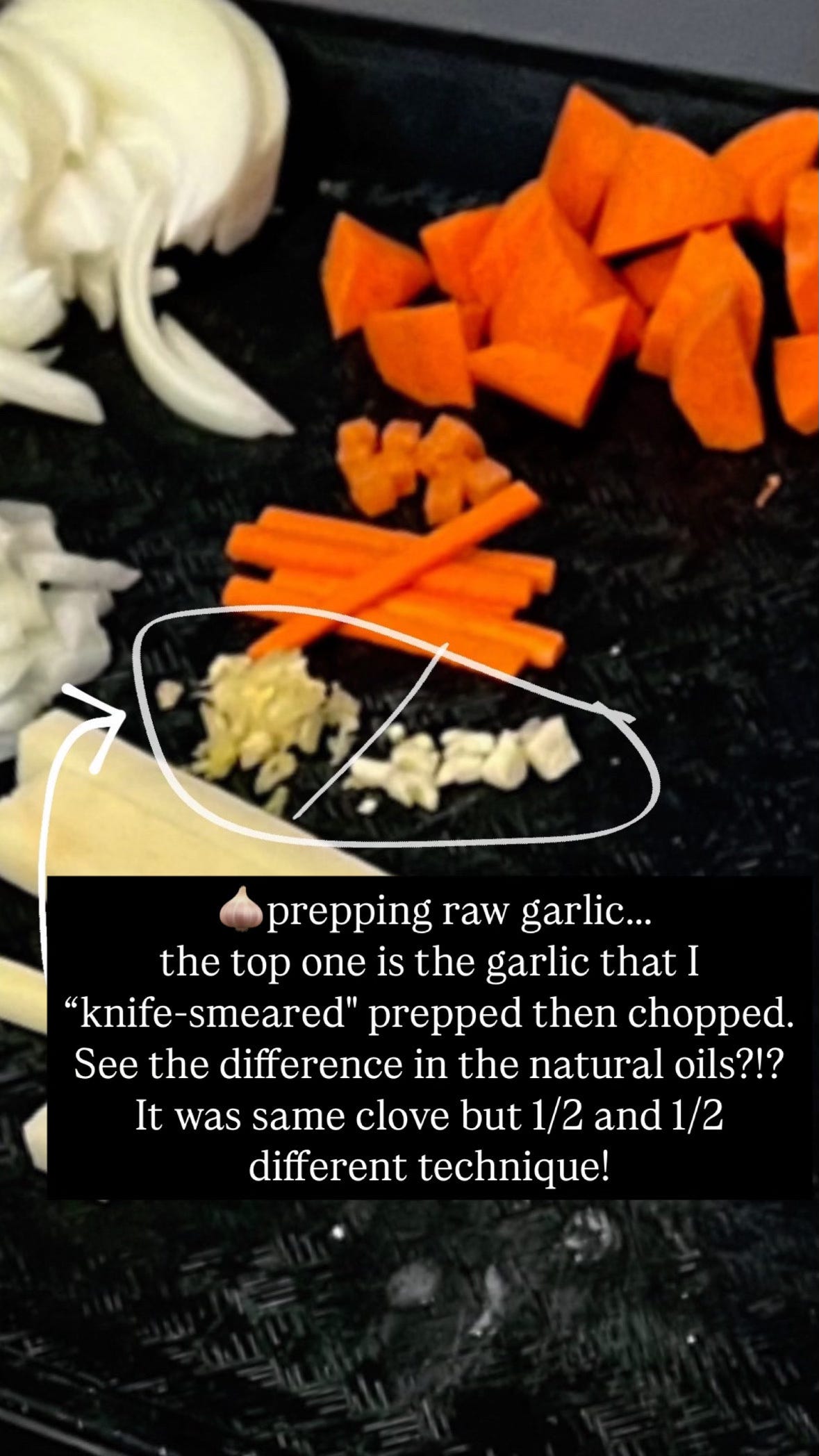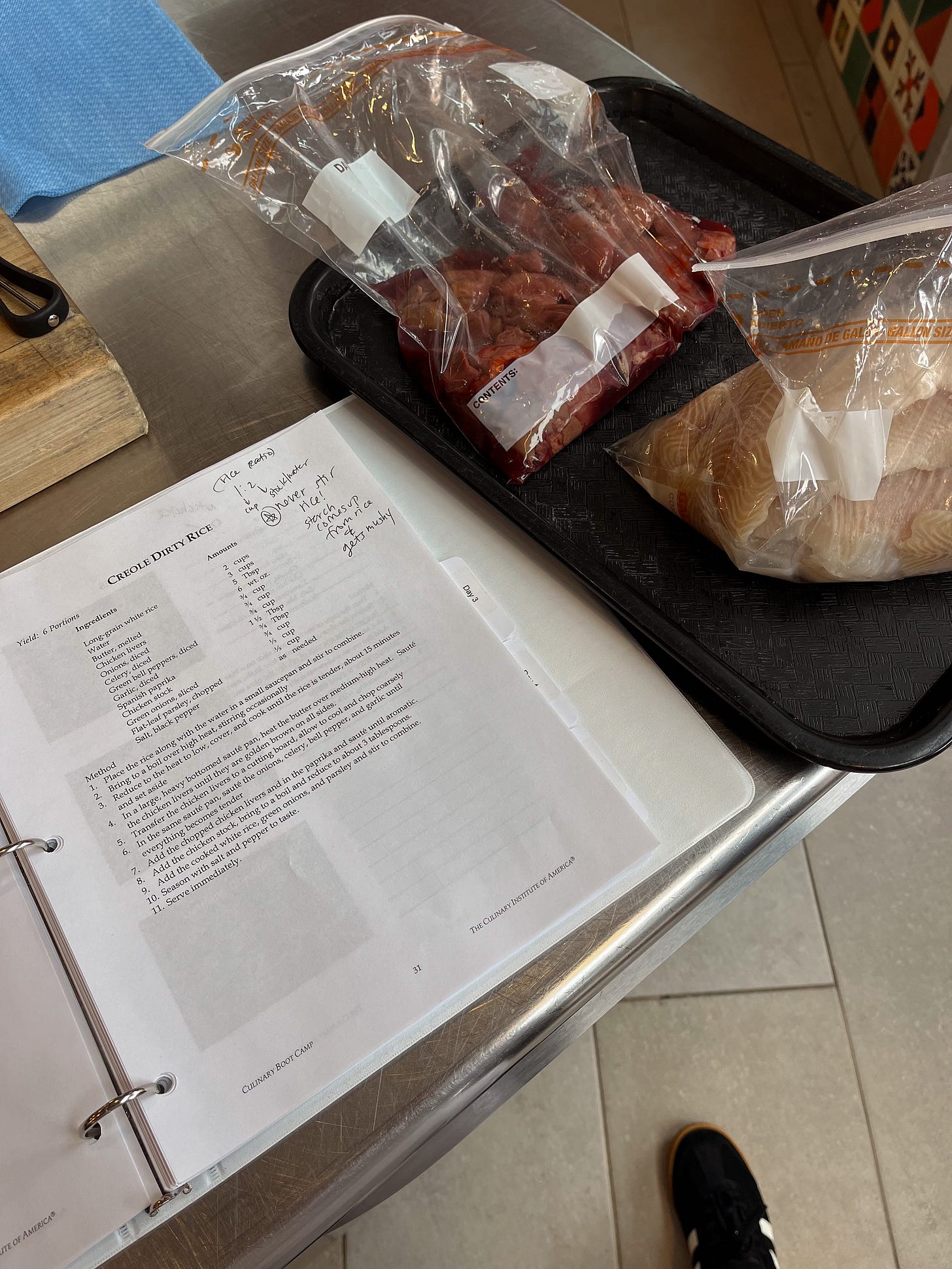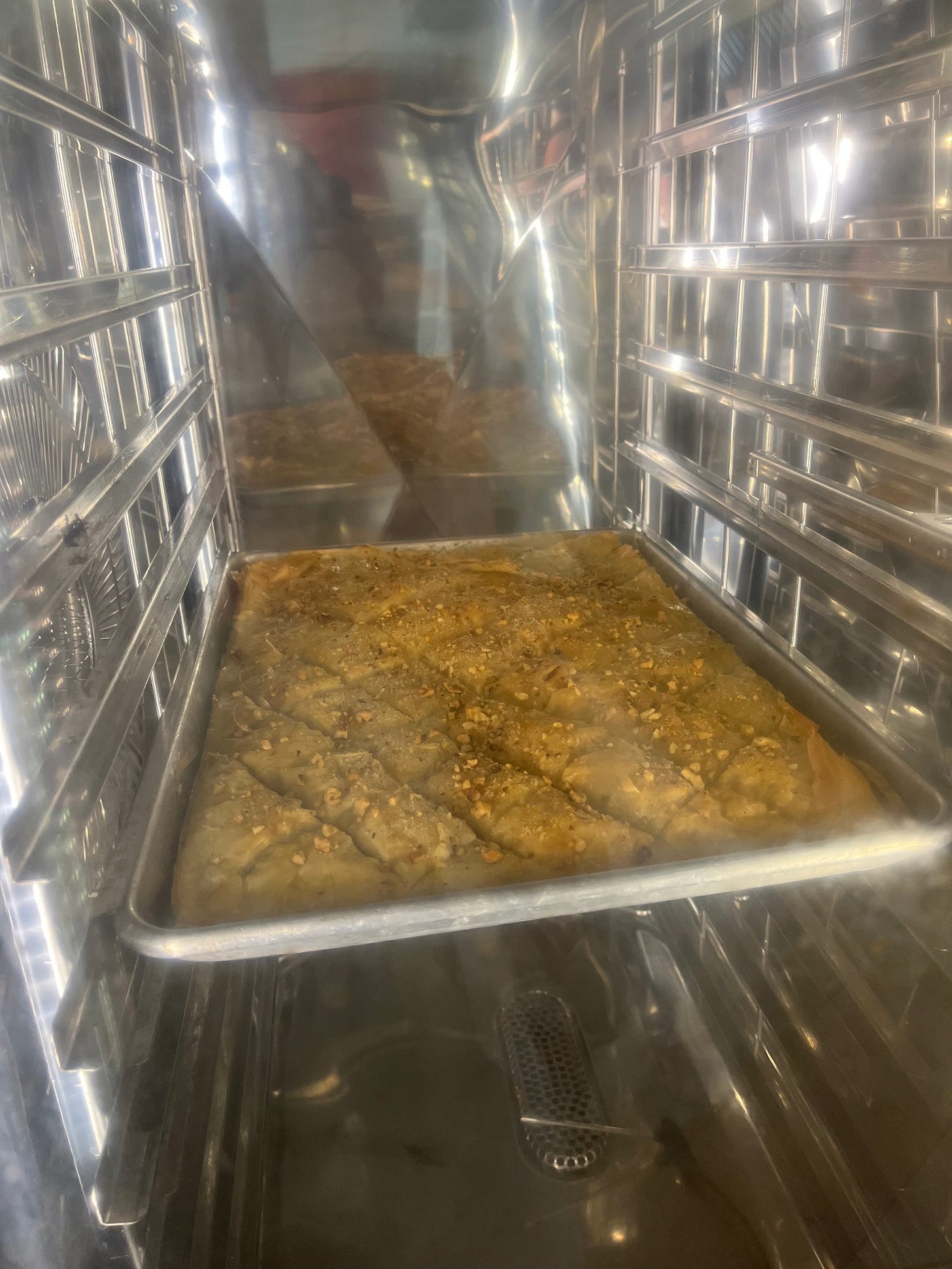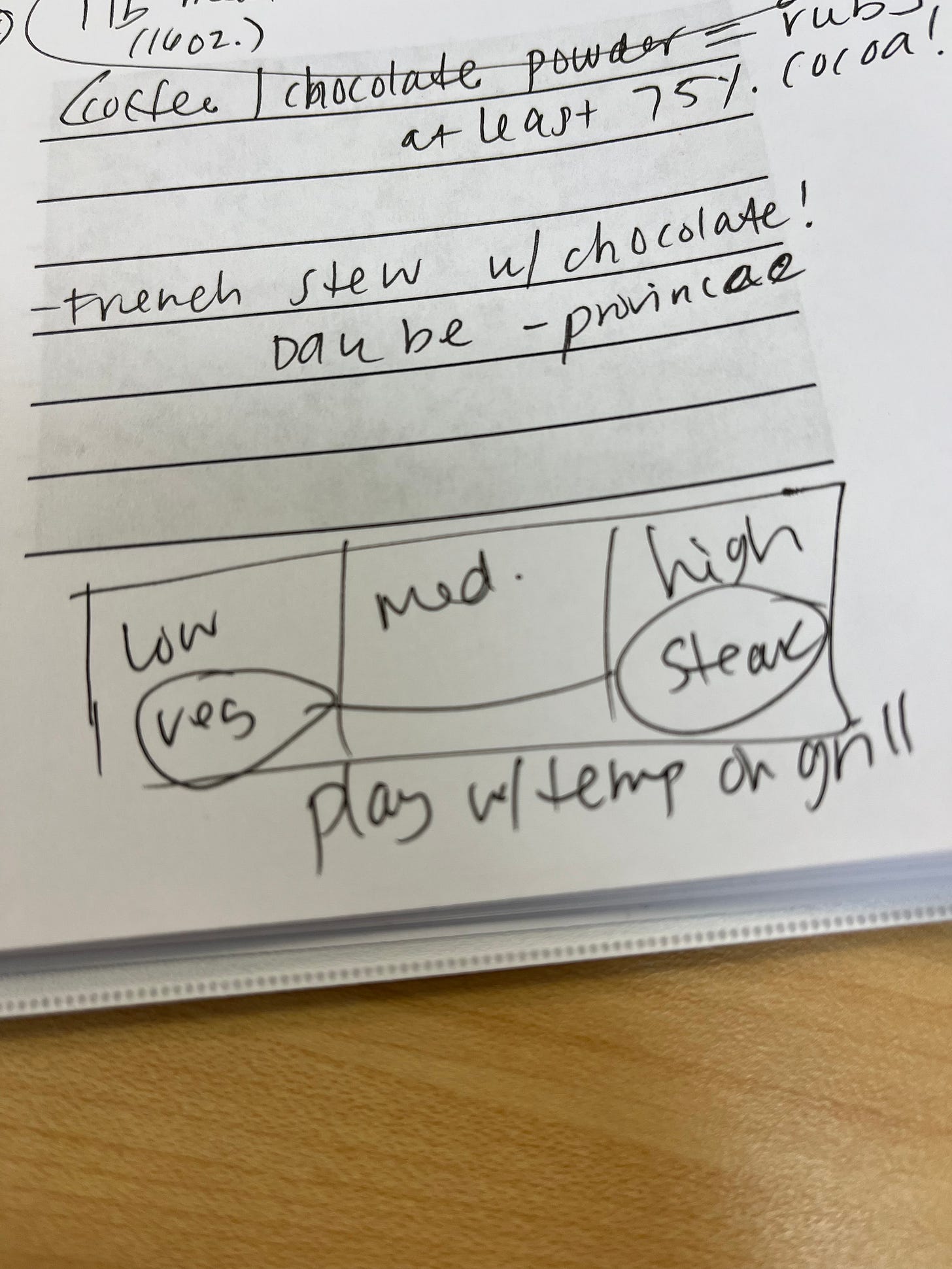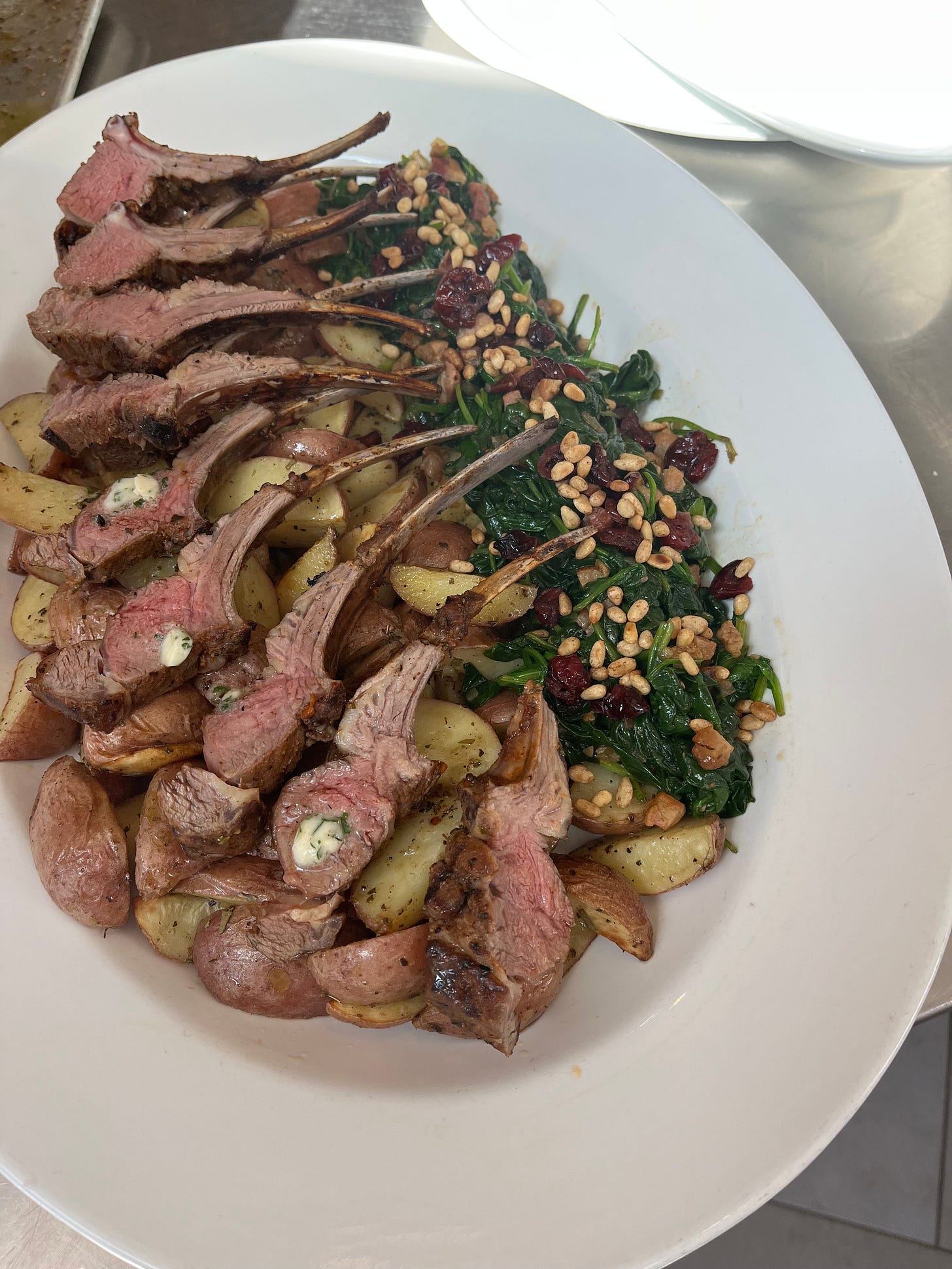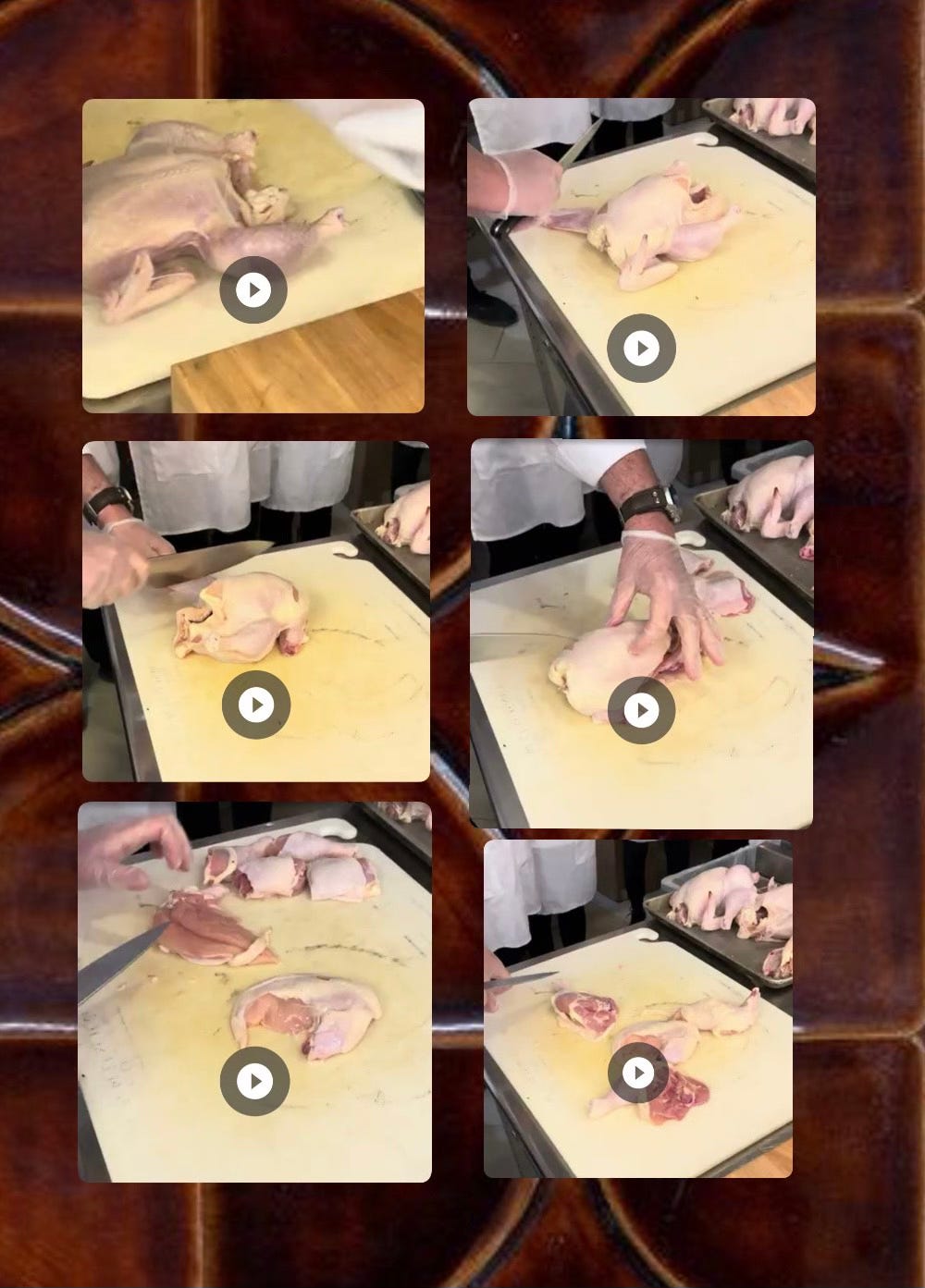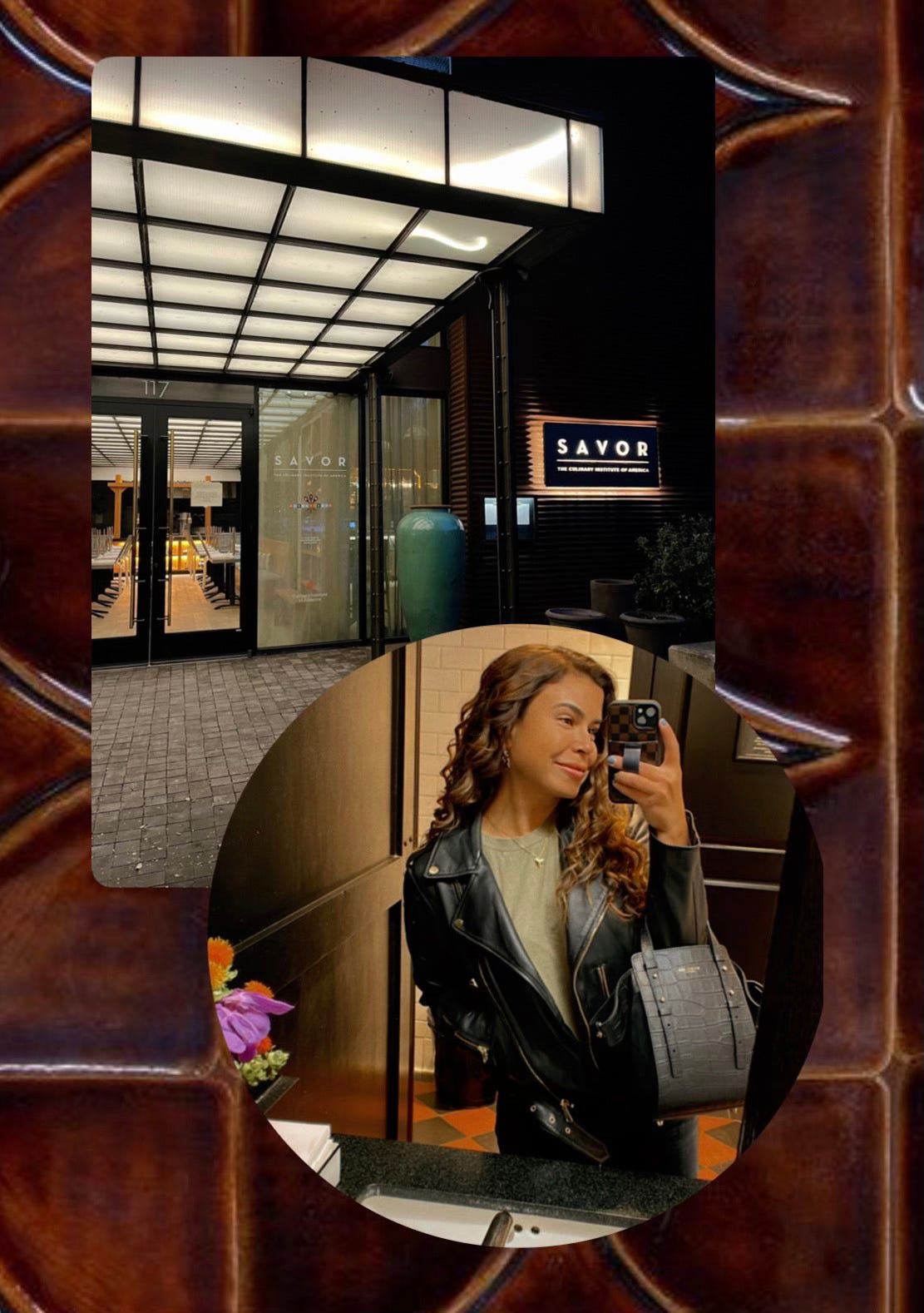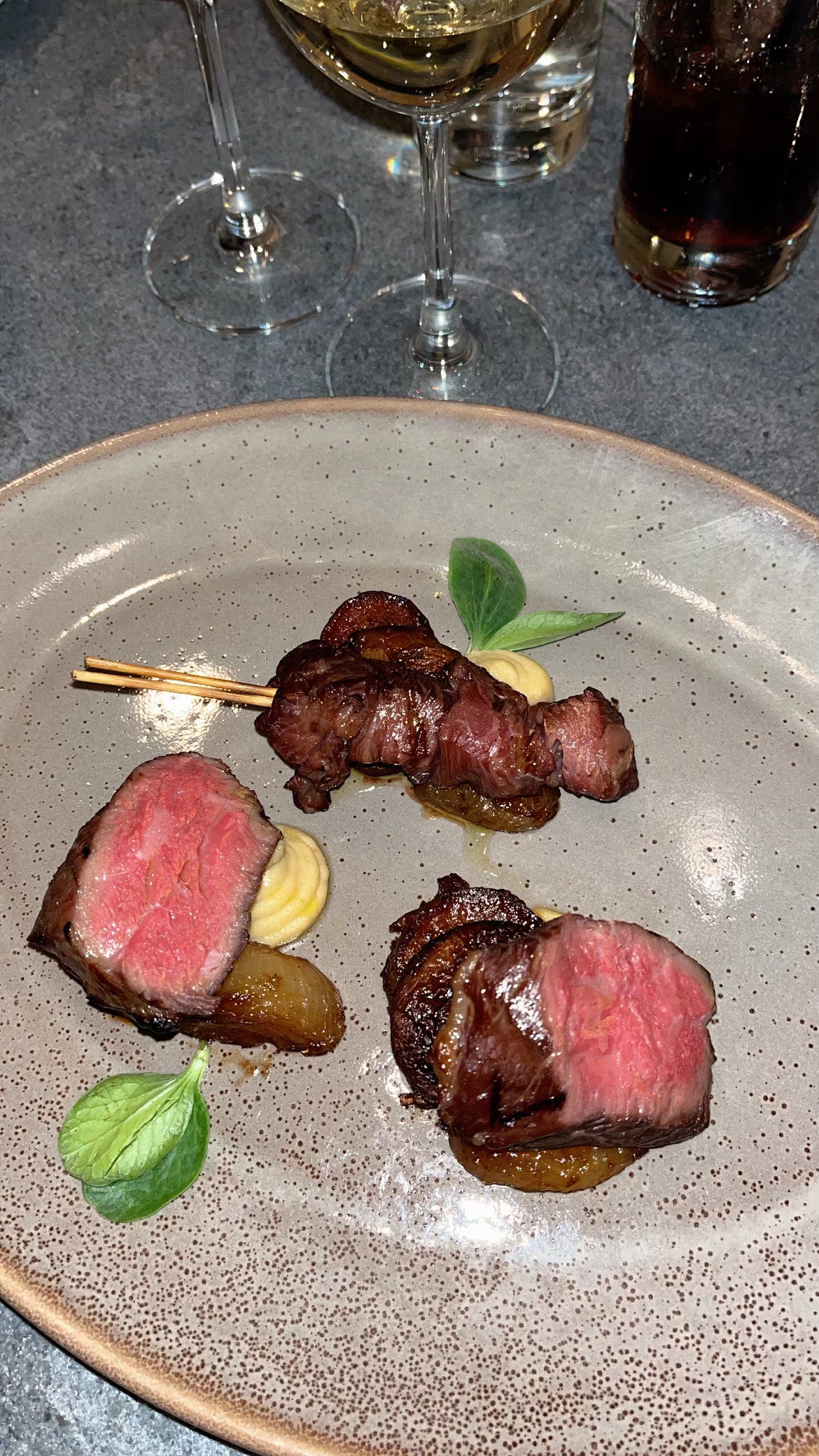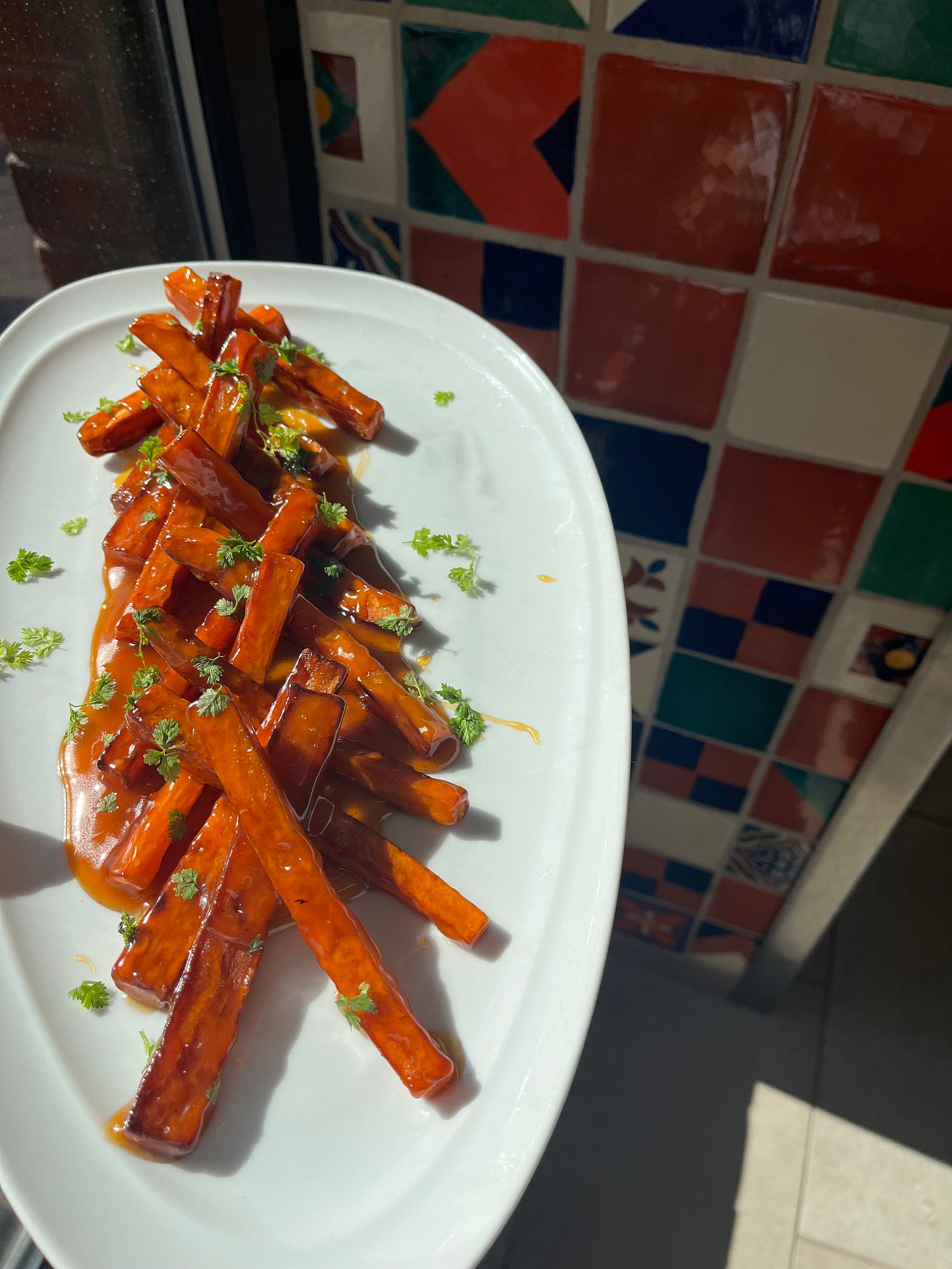Chronicles of Culinary Training. Chapter One: CIA Boot Camp
The following are notes written after each day of Basic Training at the Culinary Institute of America.
The First Day
My impressive instructor is Chef Vincent Carvalho, who has a long list of culinary accolades and experience. He hails from the Basque region of France, which is close to the Spanish border; and get this —was once the Executive Chef at Central Market (CM), aka: ONE OF MY FAVORITE PLACES ON EARTH. I talk a lot about this curated grocer/fresh food market, CM, on social media.
Detailing how over the years, it has been a pivotal gateway for exploring my love of exotic fare, as well as helping me kindle the art of creating with diverse ingredients.
Up until now, I have never had any kind of professional culinary training. The most formal cooking class that I’ve ever been a part of, was in middle school, at about 12 years old. I had taken one semester of “Home-Ec”, as an elective, where I learned life skills like sewing on a button, and some very basic kitchen abilities (we’re talking about: cooking mac and cheese level).
But then, I left home at 17 years old and moved half way across the world alone. I had no choice but to teach myself how to further sustain in the kitchen. Which actually, turned out to be exciting, while living in my first college dorm - a retro hotel in Waikiki, that had been transformed in to studio dorms for island-wide college students.
At that time, my only real chef-like “inspiration” was Anthony Bourdain… so, it’s safe to say that generally speaking, my flippant attitude toward serious cuisine formalities, had once ran pretty deep. My “Aunty” in Hawai’i, had also taken me under her wing and would invite me in to her kitchen to learn local recipes as well. This type of learning by experience, is by far my favorite. But, as I’ve gotten older, my desire to at least understand more of the formalities, has grown exponentially.
To sum up the first day of culinary school boot camp: it was a rollercoaster of emotions. The reason I had decided to enroll in this specific culinary course, was because I wanted to be able to better explain the dishes that I make at home—while sharing with my audience online, as well as friends and family in real life. Most importantly, one day, I aspire to have my own cook book (whether publicly published or not), that I can leave for my children and their children - to remember my creations.
Over the years, I became someone who shares snippets of their life online (hello, hi there, lol) which also obviously included my in-the-kitchen moments. I love sharing good food with others, but the “problem” has been that unlike in other areas of my life in which I am very regimental… in the kitchen, it’s a space where my nervous system surrenders and therefore, the creative juices flow somewhat naturally in to flavor profiles— sans recipe or measuring.
Many who have witnessed those moments over the years, have told me that they were worried that a formal training would squash my culinary creativity. But let me share what the chef instructor said at our very first morning lecture:
If you can’t read my chicken scratch, that says:
“…never ever follow a recipe exactly… recipes are only guidelines in culinary art…” (he did note that in the baking world specifically, it’s obviously different and precise for the most part).
& “…imagine the final product ~ then pick ingredients and techniques to reach that final product…”
He said this prior to us students introducing ourselves and sharing snippets as to why we enrolled in the class. Therefore, when it was my time, I chuckled while sharing that one of my main reasons, was to be able to create measurements to share recipes!
However, one of the other reasons for enrolling, was to also have training in proper knife cuts, as well as different techniques for vegetables and preparing foundational ingredients. Which… let me tell you, once we got in to the kitchen for our first demo and follow-through, I had a moment in which I thought, “okay, F* this, I’m not interested in stressing out over my potato batonette cuts being exactly a perfect 1/4 x 1/4 x 2 measurement.”
But then that faded quickly as my supreme slices of oranges were glorious and I instantly knew that my kids were going to be ecstatic about that! When you supreme an orange, you cut away the peel, bitter pith and membrane from the individual segments—or “supremes”. The orange pieces are perfect for a salad or simply a beautiful presentation. You can literally just pop them right in to your mouth and they melt away flawlessly. This is a *chef’s kiss* prep!
I could probably write 5 more paragraphs simply about cutting: chopping/slicing/dicing/mincing, but I have a 2-year culinary degree course condensed in to ONE week, still ahead of me, and I need a little nap, haha.
Besides the fruit supreme slicing that I learned, I’m also most excited about knife-blade puréeing garlic cloves!!! It was actually mind-blowing to see the difference in the natural oils after cutting up, when you first puree the garlic (smush it around basically with the knife horizontally)… and was told that that’s how you prepare garlic as a raw ingredient when your goal is for it to disappear seamlessly in to a dish (forget store-bought “minced” cubes!)
You can also sprinkle minced cloves with kosher salt, since kosher salt's rough texture will help mash the minced garlic and draw moisture out as well. Then use your knife to flatten, mash, scrape the minced cloves and voilà— garlic paste!
Also, sharpen your knife every day if you are using a steel sharpener, or one time per week if using a sharpening stone: DO NOT USE DULL KNIVES. Oh, and never put salt immediately in your chicken stock! No seasoning for a basic foundation — culinary art is building up flavor from the bottom to the top. I actually dig that sentiment!
Our class of 15 was broken up in to 4 teams, and tomorrow we start live cooking after lecture… by the end of the week, our team assignment is to develop a dinner menu using items from an assigned market basket, within 3 hours, yielding 6 portions and no waste. Eeek — talk more later! ;)
P.S. We had “family meal” after class and although the above photo may not be the most aesthetically-pleasing (because it was captured after everyone was served), I had to document it because I 100% need to re-create at home. It was a beef tenderloin cooked in a wine sauce with balsamic vinegar, thyme, shallot and garlic (reminiscent to the flavor of my parent’s holiday ribeye roast)— sooo dang DELICIOUS.
Day Two
So, unlike yesterday when I had felt extremely compelled to sit down immediately after class and write out all of my thoughts… today, after day two of boot camp — I needed time to decompress first before doing absolutely anything else. I’m still very much excited about the experience as a whole, but I don’t think much can compare to riding the high off of day one.
Also, I was not aware that day two would consist of cooking a four-dish recipe meal in my team of three people, with little-to-no demo in the kitchen. To be honest, I was a little underwhelmed by this, because for the most part - I learn best from watching someone else do (demo) + also in a classroom setting, lecture-style. We did have a short lecture this morning about sautéing, searing, pan-frying and thickeners though, in which I picked up a few new nuggets of information to take away, including…
Sauté actually means “to jump”… and holy moly, there is a difference in ACTUALLY MOVING THE PAN WITH FAT + PROTEIN/VEG. IN IT, compared to just using a spatula to move ingredient(s) around!!!!! More on this later with my crouton story.*
When sautéing, only a small amount of fat is used, enough to coat the pan. The characteristics of items to be sautéed in a pan, on a stove top, are: tender, portion size of small pieces, cook to order (think loin, rib, tenderloin, breast, seafood, high-moisture vegetables and/or pre-cooked vegetables to finish or re-heat).
The actual best fat to use while sautéing, is CLARIFIED BUTTER because of a high-smoke point since the milk solids are strained, but also not to be confused for ghee - I was told that there is a difference.
Now when it comes to searing, on the other hand, there should be no movement. You can peek by very slightly lifting the corner of the protein to check the browning, but if you actually move the protein around, you introduce moisture and then that Maillard reaction you are looking for, is disrupted. If it’s red meat, use medium to high heat. If it’s white meat or fish, use low to medium heat. You then finish these items in the oven after the seared color is achieved (golden brown for light meats or browned thoroughly for red meats).
The “brownings” are what’s left over in the pan after searing/sautéing. To then create a sauce, you degrease the used pan, “deglazing” by scraping the fond (the caramelized bits that remain in a pan after browning meat or vegetables) with liquid, to then form a sauce by adding a thickener*, the liquid, and then plate or pan the sauce with the main item.
*Thickeners can be: reductions, beurre manie, roux, pure starches/slurry, liaisons (mixture of egg yolks and heavy cream), grains, or vegetables.
Escoffier*’s Perspective on Sauces:
“Sauces represent one of the most important components of cookery… it is therefore impossible to devote too much care and attention to their preparation.”
*Escoffier was a French chef, restaurateur, and culinary writer who popularised and updated traditional French cooking methods. Auguste Escoffier left behind a legacy in the French culinary industry still enjoyed by professional chefs everywhere. He invented some 5,000 recipes, published Le Guide Culinaire textbook and developed approaches to kitchen management. (source: escoffier.edu/)
The purpose of sauces: to capture the flavor of the main ingredient, to add a different flavor, and/or to counteract the dryness of the cooking method.
Now for pan-frying… you want to use more fat than when sautéing, about 1/2 the amount of the thickness of what you are pan-frying. Proper time management is key with this cooking method, as you want a result of ‘50/50 crispiness on both sides’. The oil/fat should be neutral flavored and the temperature should be about 325-350 degrees. Items that are pan-fried are usually coated/breaded, which protects inner moisture retention. Note: make sure that there is no water content present before placing in to hot oil to avoid dangerous events from occurring, like a kitchen fire. Also, putting the coated protein/item in the refrigerator for at least 15 minutes or so prior, will seal the coating to the protein/item like glue.
For a simple flour breading, there is no need to season before frying as those herbs, etc. will just be burnt right up in the 325-350 oil/fat. Season AFTER, but it has to be while it’s still hot, since it is then most absorbable for flavor! If you wait too long, then the salt/seasoning will just sit right on top as granules instead.
BTW, Chef Carvalho says that the best potato for French fries, are “Kennebec” - as they are between a low and medium starch content.
Okay, now that may have seemed like a lot of information from just one lecture, but I swear that it felt like it went by way too fast and I wrote nearly every tidbit down! I love learning this type of information, so much.
Immediately after this, we flipped pages to our teams’ given recipes and then off to the kitchen we went… to cook in our stations for 2(ish) hours, to be tested and prepare dishes for our after-class family meal. My team had the following to make: Chopped Steak House Salad with Crumbled Maytag Blue Cheese and Red Wine Vinaigrette, Garlic Croutons, Fried Catfish, Creole Dirty Rice with Chicken Livers and Artichokes Stewed with Tomatoes.
Being in a kitchen that you are completely unfamiliar with, using gas open-flame stovetops (when all of your at-home stovetops have been electric for the past 15 years), not knowing where any utensils are, having to ask for ingredients needed/missing… plus working with two men that you just met, coupled with being assigned the station at the furthest end of the kitchen… let’s say - it felt just like a stressful job to complete cooking well enough for people to eat; instead of being immersed in a learning atmosphere at culinary school (like I had naively imagined, LOL).
Obviously I am aware that even this type of experience has its’ own educational takeaways — but I just really would have liked more demo time with our instructor.
I must say though, “working” back in a kitchen really did feel nostalgic regardless. One of my very first jobs as a teenager, was working at an Italian pizzeria in Chicago. I also continued on in the kitchen/restaurant world as a waitress in Los Angeles for two semesters of college, and as a hostess at one of the busiest bars/eateries in Waikiki Beach, back in Hawai’i.
Today, the chef told me that instead of baking the garlic croutons, that I should just sauté them in a pan. I had never done that before, but I cubed the pieces of barely stale bread, knife-smeared garlic cloves to mix with a sprinkle of salt, and tossed all in melted butter to then try to figure out how to make them adequately crispy in a pan. *Here is where the story comes in. I have gotten so used to “sautéing” or just plain and simple - cooking in a pan, using a spatula or other type of similar utensil - that I didn’t realize I was missing an entire world of ACTUAL PAN-MOVEMENT SAUTÉING! To be fair though, it is much more sensical to do this on open-fire stove tops and not so much with electric flat tops!
You see, my “croutons” were not crouton-ing whatsoever, until I asked the instructor to come over and show me how he meant for me to pan-sauté crispy croutons! He came over, raised my flame to higher heat and expertly flicked the pan forward and back in an L-direction, as my eyes grew large seeing the INSTANT reaction of the bread to the coating and flipping motion of the hot butter/garlic mixture… there was a HUGE difference in just seconds compared to what I was trying to accomplish with just spatula movements! Only a few minutes later and I had HOMEMADE PAN-SAUTÉED CRISPY GARLIC CROUTONS. I then moved them to a sheet of parchment paper to let cool down in order to later top our team’s salad with.
Our catfish turned out super delicious, as did our artichoke-tomato stew as well. Chef demo’ed how to break-down artichokes to get to the artichoke heart for pan sautéing and my life is forever changed. Until today, I had only ever roasted artichokes whole (which I love so much by the way) — so I can’t wait to create new dishes with this skill.
Over all, I walk away from day two still as a success, just in a way that I didn’t expect. I’m also already pretty darn TIRED—eek. Tomorrow, we have more cooking during the day, but also a class tasting as an outing in the evening at Savor, the CIA’s student-led restaurant on campus… that will be fun! I’ve actually been to Savor before, for a food blogger event, so I am excited to return within a different capacity.
Oh, and the family meal was a hit-and-miss, as some of the recipes caught other teams by even bigger surprise (like, making homemade gnocchi for the class to eat for lunch, lol) — and when I had bit in to my piece of pan-fried pork, it wasn’t cooked all the way (which turned my stomach for the rest of day, TBH.) but I don’t slight anyone, as I too, thought our creations were going to be fails given the extreme unfamiliar work situation that I mentioned earlier.
BUT, a positive. My favorite was this dish called “Spaetzle”, which is a traditional handmade German pasta made with flour, eggs, milk and seasoned with nutmeg… however, it was their (another team in my class) combination with a mustard beurre blanc sauce that absolutely blew my mind! Y’all know that my palate loves tangy flavor profiles, and this was just that, in a way that I had never experienced before. The beurre blanc was actually supposed to be for the pan-fried pork cutlet, but it had gotten mixed with the Spaetzle and that creation is what rocked my tastebuds in a brand new way. Here is a picture of that recipe:
Day Three
Alright, day three and we got a little more pep in the step! Not going to lie, yesterday wasn’t the best feeling after the in-kitchen team cooking experience. However, today — much better! Also, I can’t tell you how many times in the past years, that I have bought ingredients to make baklava at home, but then didn’t end up attempting to make it, because I was intimidated. So guess what I learned and created today… BAKLAVA. Wow, it is actually pretty simple and my kids are FOR SURE excited that I can now make it fresh at home. Plus, I have so many ideas for different variations that I can create! :)
But that’s not all obviously. Today’s morning lecture time was stellar. We discussed the techniques of dry-heat cooking without fats and oils, plus the topic of soups.
Here are some of my notes:
Too much fat in your marinade (not balanced), and when grilling - you will burn instead of CHAR. To cut fat, mix with white wine, or you can always just brush steak/protein lightly with a simple olive oil and salt/pepper. When it comes to salt/pepper - 2:1 ratio is usually best!
We went over a lot of information during this lecture, and I was elated about it, because these topics are the ways of cooking that I not only use the most, but deeply enjoy: roasting and grilling.
By the way, Chef eats his steak medium-rare (I asked), so do I. He also thinks that ribeyes are the most flavorful steak cut (so do I), and explained that that is the case because it’s a cut from right next to bone… which, bone = flavor! All that collagen-goodness in the marrow/bones, does wonders for flavor (also makes sense as to why chicken breasts bore my taste buds to death).
So when it was time to get in to the kitchen, our team’s given recipes for the day were: New England Clam Chowder, Grilled Lamb Chops with Lemon-Parsley Butter, Garlic-Roasted Potatoes with Parsley and Oregano, Sicilian-Style Spinach, Baklava.
Once all the teams had their dishes complete - chef said, “If I were grading you, yesterday’s meals would have been a B-, but today, we are already up to an A-”… and to be frank, I totally agree. Yesterday I had bitten in to a piece of meat that was still raw— but today’s family meal was phenomenal across the board.
Humbly stating, our team’s dishes were my favorite part. The bacon added in to the clam chowder, created so much depth to the flavor, AND who knew that I could ever get so excited for SPINACH —but woah, cooked with pancetta, it was DELICIOUS.
Overall, today felt so edifying. Chef live demonstrated a few important skills in the kitchen, including breaking down poultry, as well as noting the importance of TIEING POULTRY LEGS TOGETHER BEFORE ROASTING, and especially stuffing or covering cavities (like stuffing going inside a turkey to cook with the meat), so that 1.) the juices don’t run out and 2.) the breasts don’t dry out from the inside-up/out!
Tonight we have a class tasting for dinner, at the CIA’s on-site restaurant, Savor. I am thrilled to return and get a more intimate look at the workings of the restaurant. Plus, the dishes are prepared by the culinary arts degree program student chefs!
P.S. I sneaked a peek at our team’s assigned recipes for tomorrow and it includes 40-Clove Chicken, which I have never made, so I am ultra excited for that, given that I make chicken for my family ALL THE TIME for dinner.
Day Four
Welp, it’s getting a tad bit harder to sit down and write my thoughts as the week goes on, because… I AM TIRED.
Last night, we had a tasting/dinner experience at Savor, it was a great time. Though the portion sizes were “small” or rather, very much not-American-size-portions, lol. One of my classmates that was sat at my table, is a wine enthusiast, and since the Maître d’Instructor in charge of Savor, is a distinguished French Sommelier - Fabien Jacob, our table of four sampled a different wine for each course that we ate. This was such a unique experience for me.
This morning was our last in-classroom lecture, which I’m a bit sad about. Our instructor, Chef Vincent Carvalho, is an absolute goldmine of knowledge. So to be able to ask questions openly, and gain feedback from his P.O.V. and expertise - has made this experience absolutely worth it!
He said something this morning that totally defined what I absolutely align with and love about creating in the kitchen: “I believe the ingredients tell you what to cook…”
He also noted: “…You should go to the market, see what is in season and available, and create from there. That is food stability and protecting the food system as well.”
He cannot stand the type of big-box stores (in the likes of Costco), as he explains how that type of food shopping can create excess food waste, amongst much else. We discussed as a class, the stressed food systems of our world. These discussions were most definitely a big highlight of the week too.
The last set of topics for the lecture were: moist-heat and combination cooking. Which detailed shallow-poaching, deep-poaching, steaming, en papillote, and the braising and stewing methods. Some of my notes are as follows:
Make sure to cut ingredient portions (vegetables) in even sizes, so that the cooking results are even too!
When using the poaching method, this is for foods to be served immediately. So, if you’re serving other dishes prepared using differing techniques— time management and organization is key! For poaching, maintaining liquid temperature at 160 is perfect. Also, poaching doesn’t just mean placing in hot WATER! Bleh, how bland. You need acidic water with aromatics (think: vinegar, wine, lemon, herbs)— ph level needed to de-nature the molecules and cook the protein (food science is everything!)
If you ever cook fish and see “white scum” floating --that means that it’s overcooked and the protein got too stressed.
The “en papillote” method is a variation of steaming, you add your protein to your parchment paper pouch, a touch of liquid like olive oil, with herbs/seasoning, and it cooks in the oven within its naturally released juices. If you’re also incorporating veggies, like a starch (potato) or cruciferous (broccoli), blanche those quickly first before adding to the pouch, to help them result in being cooked thoroughly. 350 degrees is usually sufficient enough when utilizing this method.
A confit is a similar method, but you use a fat like olive oil instead of court bullion to poach.
If you ever over-salt something, you can use sweetness or acidity to cut it down.
When making vinaigrettes - EVOO (extra virgin olive oil) is too strong of a flavor profile and will drown out any other competing herbs or added ingredients.
Never use a dented can of veggies, etc. (food safety issue re: botulism)!
Our team’s given recipes for the second to last day, were: Goat Cheese Croquettes, 40-Clove Chicken, Fresh Egg Pasta, and Green Beans with Bacon, Shallots and Mushrooms. I have heard of “40-Clove Chicken” before, but never had eaten it or made it— it’s very delicious and I will be re-creating some version of it at home. Also, this was my first time making homemade fresh egg pasta — which I will most definitely also be incorporating at home in the future too!
Day Five, the final day of Culinary Boot Camp: Basic Training
Originally, each team was supposed to get an assigned “market basket” with *listed in our notes* ingredients to use, but no recipes. This was so that we could put in to play some of the techniques that we learned during this course.
So yesterday, my two teammates and I had discussed and came up with a general game plan for what we were going to execute today. Then, arriving to class this morning— surprise! Scratch off the market baskets and insert ‘assigned proteins’ for each team (ours was a huge pork shoulder). Coupled with a free-for-all of accompanying ingredients laid out across the main demo work station counter, which contained: starches, vegetables, garnishes and other random bits.
I was one of the first students to arrive in the classroom (extreme time management is part of my OCD), so I was brainstorming before my teammates showed up, but ultimately we all decided together to create a pork shoulder stew, aromatic rice pilaf, and honey-sriracha glazed sweet potatoes.
We had about two hours to complete our 3-4 courses (we didn’t go with a salad so 3 courses for our team), and therefore, it was actually not that stressful at all. We had a lot of fun, each adding our own sentiments, ideas and ultimately building-up the flavor profile for our main dish, the stew, as a team.
The honey sriracha glaze was started with lots of honey in a ‘warming-up’ pan. Then we added the sriracha, a little bit at a time, two juices of fresh oranges, a tad bit of canned orange juice, and some orange zest. It is so important to taste as your going and then pivot or adjust as needed— so at that point, I felt that it definitely needed a contrasting element to it, to cut between the super sweetness with that warm spice too.
There were no lemons available (my first thought), but one of the CIA’s first semester students was an aid of sort, for our instructor—so I asked her to taste it. She thought for a few seconds and then said, “apple cider vinegar and a few garlic cloves!”… which, the vinegar, yes—duh, I should have thought of that as a substitute for my initial thought of using the acid from lemon juice—but the garlic cloves? Perplexing, but we were interested! She smashed a few cloves just with the palm of her hand, not like in-to-oblivion type of smash, but more so just to “crack” them open so that they could release their natural oils while simmering in the glaze. They did just that, and then we removed them and let it reduce a bit more to become a true glaze—which turned out VERY GOOD!
That glaze topped our sweet potatoes, which everyone ended up thinking were glazed carrots, lol. Probably because of the cut we chose, the color, and then also the baby (French) parsley leaves as a garnish for contrast. But no complaints whatsoever with the flavor!
We also had initially pan-fried, very briefly, those sweet potato batonnets, in the leftover pork fat (from braising the meat before building the stew) and it was a genius idea! Overall, my team (the 3 of us) worked well together, it was light-hearted banter, fun and an edifying experience—not a “too many cooks in the kitchen” scenario, which is a win in itself, right?!
^ My team of three, with Chef Instructor Vincent Carvalho
Overall, this “CIA Boot Camp” experience became a core memory for this chapter of my life. I am thankful for the snippets of knowledge that will stay with me in however many more years I am blessed to be able to create in the kitchen. I’m also just happy with the very cool and educative Culinary Institute of America (legendary institute) experience in general.
Thanks for reading. Talk soon,
x. Heather







